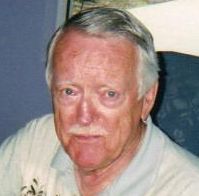
Publisher:
Bonnie King
CONTACT:
Newsroom@Salem-news.com
Advertising:
Adsales@Salem-news.com

~Truth~
~Justice~
~Peace~
TJP
May-21-2014 08:28

 TweetFollow @OregonNews
TweetFollow @OregonNews
A Farewell To Hemingway
Bill Annett Salem-News.comA bi-polar critique: across the river and into the trees...
 Art courtesy: rugusavay.com |
(DAYTONA BEACH, FL) - We all grew up in a culture that doted on Ernest Hemingway. Even before I cleared English 101, my father was a Hemingway fan, praising his crisp, simple diction, his avoidance of adverbs and verbose construction, his nouveau Parisian cool, his he-man take on guns, women and courage.
Check it out (from his final novel, Across the River and Into the Trees): “He saw the girl watching him and he smiled at her. It was an old smile that he had been using for fifty years, ever since he first smiled...”
And if you liked Hemingway, you had to ignore the fact that as a person he was almost a total jerk. He was a bully, a braggart and - in the English vernacular - a cad.
He loved to put on the boxing gloves with someone smaller and less adept, such as Scott Fitzgerald, and beat the crap out of him. He left his first wife and his son, still a baby, compulsively when he met his second, and more beautiful paramour. And his scant, almost marginal war experience in Italy in 1916 - actually, I think he was a correspondent for the Toronto Star - rendered him a permanent military expert.
Accordingly, some 25 years later during World War II, he - stringing for some American publication safely to the rear of the action - could pontificate about the comparative energies and talents of Bernard Montgomery and George Patton, who together in large measure merely won the damn war.
In fact, Hemingway's bi-polarism, as a result of his well-publicized manic depressive disorder, is reflected not only in his roistering lifestyle but in his work, from the manic fixation on matadors and the bull run at Pamplona to the deep depressive immobility of The Swede, the former fighter, waiting resignedly for The Killers to take him out, alone in the refuge of a hick mid-western town.
Hemingway: Odio et amo. You've got to love this guy when he's being his honest self. The early short stories, the Nick Adams character who was his alter ego as a young man when he was writing this stuff, with the clean, simple prose of young manhood, which became his lasting signature.
Up In Michigan and The Three-Day Blow. But the persona that usually takes over as the obviously autobiographical protagonist in his novels is often that of a braggart, an unrepentant tough guy, womanizer and, let's face it, phoney.
Following two or three decades behind him, I would have loved the opportunity of sitting in a sidewalk cafe on the Left Bank with a shot of absinthe and listening to him talk about The Sun Also Rises and his take on the imagery of death in the afternoon and impotence. But I'm damned if I'd have wanted to get drunk with him in Montmartre, because he'd likely reach a point where he'd want to go a few rounds and, malheureusement, in life as well as in the writing game, he was a light heavy and I've resigned myself to being a fly-weight.
But the split personality of the man needn't detract from the major work of the writer; it even imprints it with the kind of dualism and tension that characterize all great art.
The character of Lieutenant Henry in A Farewell To Arms is both admirable - "I didn't particularly want to kill anybody" - and craven, in that on the flimsiest of pretexts he deserts his active duty to run away with the English nurse, likely being instrumental in her death and that of their baby. (A weird fictional foretaste of his later desertion of his own wife and child.)
I once owned a famous poster advertising an historic bullfight program in Madrid, I think in 1936, featuring the big three toreros at the time - I think it was Manolete, Dominguin and Sanchez, all on the same program. (I've spotted identical copies of the poster in two different Hollywood movie sets, including "Barefoot In The Park.") I'm sure Papa Hemingway must have been there that day. The poster depicts a twirling matador and a near-spent toro; it's a beautiful color rendering.
It's hard to knock a national pastime, but even baseball has its steroid scandals. So you can remain indifferent if you wish to Papa's show-off depiction of the brutal stupidity of bull-fighting, but it's hard to deny the stark beauty of Death in The Afternoon. In literature as in business, that's what makes a market.
In fact, Hemingway's greatness probably depends on that duality, the left jab and the following right cross, the hyper Francis McComber and the deep submission of The Old Man And The Sea. And speaking of which, that's where Hollywood comes in. Because there's also a vast difference in the movie treatments that were inflicted on the half dozen Hemingway novels that were committed to film.
At the worst, The Old Man and The Sea and the capture of The Great Fish is a close allegory for Hollywood Hemingway: the great fish, lashed to the side of his boat after an herculean struggle, is gnawed to shreds by sharks and other predatory denizens (read Hollywood scriptwriters) by the end of the picture.
Winston Churchill, another manic depressive, once said that the margin between great achievement and abject failure was as thin as a razor's edge. Hemingway, like Winnie, defied and crossed that line many times, and we can all be grateful for it.
Hemingway's later years, his vacillation between his house in Key West and his cabin in Ketchum, Idaho, are crawling with clues, even if he hadn't already been diagnosed as a manic depressive.
If you're ever in Key West, check out his house at the extreme south end of Duval Street. Papa's third wife, Pauline, built him a study in a shack at the back of the lot, and its curious construction included a metal roof, not unusual in hurricane country. It's known as a "roof-over."
And one day, according to the story I was told when he visited Duval Street, Ernest and Tennessee Williams were sitting on the back veranda of the house working their way through a bottle of Weller's Best.
The temperature was in the high 90's, and as they watched, a cat tried to navigate the roof-over, stopping every step or two to shake its forepaws. And Hemingway said: "Look at that cat on the hot tin roof."
To which Tennessee responded: "What a title for a stage play."
Hemingway and Tennessee Williams. The final dualism or unlikely contradiction. The great playwright, gay before it became popular, and Hemingway the ultimate womanizer. Like the close friendship between Duke Ellington and his close friend and arranger, Billy Strayhorn, the two of them at the extremes afflicted as womanizer and gay-before-his-time. Go figure.
The last act for Ernest, of course, took place in Ketchum, where he was suffering in the throes of his disorder. Pauline and his doctor had realized the suicidal potential and carefully sequestered the key to the cabinet that held his shotguns and the ammunition. In his crafty bi-polar way, Ernest somehow got his hands on both. He always did have a thing for guns. You know the ending.
The medium-sized, fairly happy life of Ernest Hemingway. Unlike the case of Francis McComber, it wasn't necessary for somebody else to pull the trigger.
Odeo et amo. Either way, he left us a lot.
*FOOTNOTE: Good piece on Hemingway. I have one little-known addendum to the story that needs to be appreciated:
Hemingway undoubtedly had PTSD from his horrific warzone exposure as a ambulance driver in Italy in WWI. Therefore he would have had nightmares, flashbacks, anxiety, depression, suicidality and insomnia with sleep deprivation (with resultant mania and agitation), that most people, including El Papa, usually self-treat with alcohol and/or sedatives and tranquilizers (until the psychiatrists, in the mid-1940s, came up with brain-damaging, memory-erasing, depression-inducing electroconvulsive “therapy” (ECT) upon which was then - added – in the mid-1950s - the cavalier use of brain-altering/brain-damaging, dementia-inducing, suicidality-inducing psychotropic drugs, all of which Hemingway was subjected to later in his life.
And, of course attempts to overcome the addictability of alcoholism and/or sedatives by stopping the booze or downers would result in manicky withdrawal symptoms and a mis-diagnosis of bipolar disorder. (rather than the more accurate diagnosis of post-traumatic depression and drug-induced mania and/or withdrawal mania).
Two weeks before he blew his brains out with his shotgun, he had just finished his second course of ECT at the Mayo Clinic (the usual approach when every psych drug has been tried and failed to help – which is an inherent quality of most psych drugs, which can actually make patients worse).
When he flew back to his retreat in Idaho, he talked a lot about the futility of living a life as a creative writer if his memory had been erased by his “treatment”.
Ernest Hemingway’s death was iatrogenic! It was his psychiatric physicians who mis-diagnosed him as bipolar and their “treatments” were actually responsible for his death. The Mayo Clinic prefers that this ignominious part of their “glorious” history be buried. It wouldn’t be good for their reputation if very many people knew about it.
~ Gary

Bill Annett grew up a writing brat; his father, Ross Annett, at a time when Scott Fitzgerald and P.G. Wodehouse were regular contributors, wrote the longest series of short stories in the Saturday Evening Post's history, with the sole exception of the unsinkable Tugboat Annie.
At 18, Bill's first short story was included in the anthology “Canadian Short Stories.” Alarmed, his father enrolled Bill in law school in Manitoba to ensure his going straight. For a time, it worked, although Bill did an arabesque into an English major, followed, logically, by corporation finance, investment banking and business administration at NYU and the Wharton School. He added G.I. education in the Army's CID at Fort Dix, New Jersey during the Korean altercation.
He also contributed to The American Banker and Venture in New York, INC. in Boston, the International Mining Journal in London, Hong Kong Business, Financial Times and Financial Post in Toronto.
Bill has written six books, including a page-turner on mutual funds, a send-up on the securities industry, three corporate histories and a novel, the latter no doubt inspired by his current occupation in Daytona Beach as a law-abiding beach comber.
You can write to Bill Annett at this address: hoople84@gmail.com
 |
Articles for May 20, 2014 | Articles for May 21, 2014 |






Terms of Service | Privacy Policy
All comments and messages are approved by people and self promotional links or unacceptable comments are denied.
Anonymous May 24, 2014 9:08 am (Pacific time)
Hemingway died?!
Bill Annett May 23, 2014 12:43 pm (Pacific time)
I agree, Ralph. Every Hemingway buff should visit Sloppy Joe's in Key West, Papa's favorite bar. The original one on a side street off Duval, not the commercialized one on the main drag. Just a short bar and a nine-ball table. And a piano where a spirited performer named Barry Cuda (sp?) used to play pianoo with a remarkable part of his anatomy.
Ralph E. Stone May 23, 2014 4:45 am (Pacific time)
While in Cuba many years ago, my wife and I visited Finca Vigia, Hemingway's home outside Havana where he lived with his cats. We also visited Bar La Floridita where there is a life size statue of Hemingway sitting at the bar with a daiquiri. Hemingway wrote "The Old Man and the Sea" in Cuba, which won the Pulitzer. Later, he won the Nobel prize for literature. Even cads can leave an indelible mark.
[Return to Top]©2025 Salem-News.com. All opinions expressed in this article are those of the author and do not necessarily reflect those of Salem-News.com.